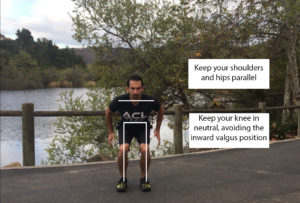…And How To Help Them Explode into Next Season
Every year, as Summer approaches and many sports are winding down for a brief rest period, supportive parents of serious athletes ask, “What should I have my kid do to stay conditioned during the off-season?”
In this article, we discuss whether or not a break from sports is beneficial and why; and we discuss some of the best strategies to focus on during the “break”, so your athlete will be able to capitalize on the opportunity to rest and be ready to explode like dynamite next season!
Benefits of a Break from Sports
In today’s generation of competitive youth sports, seasons have turned into year-round commitments and athletes have been forced to specialize at a young age. Year-round sports lead to muscle imbalance, ligament fatigue, postural asymmetries, overuse injuries, and exaggeration of improper movement patterns (aka worsening of bad habits).
By taking a break from the same repetitive movements and activities, soft tissues (i.e. muscles, tendons, and ligaments) have an opportunity to rest, rejuvenate, and recover from the gradual fatigue and breakdown that occurs through a rigorous sport season.
Time-away also gives the athlete a chance to “miss” the sport and get excited for training to resume, avoiding burnout. Nurturing excitement and passion helps to promote love for the game, which will hopefully continue to be at the forefront of the athlete’s performance.
For serious athletes, “taking a break” from sports does NOT mean “to sit around and do nothing.” On the contrary, a break can be perceived as a form of “relative rest” and an opportunity to reduce imbalances, resolve dysfunction, and mentally re-center oneself.
What does Relative Rest mean?
Relative rest refers to a change in your training routine to rest areas of the body from repetitive stress that an athlete encounters throughout their season. However, during this period of relative rest, it is important to stay active and fit. An athlete’s body will benefit from changing the forces that have been so consistently applied to it.
Cross-training is a form of relative rest, if it is different enough from the primary sport that the athlete participates in. Cross-training allows the body to move in different ways, which unloads overused tissues, develops new strength and resilience, and ultimately creates a more well-rounded, durable athlete.
Basic Movement Retraining during the Off-Season
Practicing basic movement patterns or exercises with good form helps to eliminate bad habits and normalize muscle balance. Movement retraining is a strategy to visualize, execute, and repeat simple, functional movement patterns in order to establish optimal patterns of movement. Practicing these correct movements over and over trains the body to move this way more naturally. The plan is to then transition the basic movements into sport-specific movements, so the athlete will use better techniques in real-life sports situations. Proper technique results in greater efficiency, lower risk of injury, and enhanced performance.
For example, when we integrate movement retraining with elite athletes, we may practice squats, lunges, landing from a jump, pivoting to change directions, etc. Even professional athletes need to work on movement retraining and stability within these basic movement patterns.
Injury Prevention during the Off-Season
Injury rates are at an all-time high in youth contact sports, such as soccer, football, basketball, lacrosse, and rugby. Yet some of the most heartbreaking and life-changing injuries occur in non-contact situations. Did you know that 70% of injuries to the anterior cruciate ligament (ACL) are preventable with proper training? Experts agree that participating in a specialized exercise program can reduce the rate of sports injuries by 50-80%!
The cool part about injury prevention exercises is that it only takes 15-20 minutes, just 2-3 days per week!
Choosing an effective injury prevention program should take some consideration. Good injury prevention programs will integrate strength, balance, jump-landing mechanics, agility, and flexibility exercises. “Injury prevention” is a buzz word these days, and more and more teams, clubs, and colleges are including these strategies in their training. Still, however, the injury statistics are unacceptably high; and serious athletes should still be independently proactive if they really want to avoid a preventable, devastating, season-ending injury.
Why not use the time off in-between seasons to focus on relative rest and injury prevention?
Our favorite injury prevention program is the ACL Strong program, which guides athletes step by step through a system that protects their knees and reduces the risk of injury in sports that have a high rate of ACL tears and other lower extremity injuries. Participants of the program learn how to move properly through movement retraining education and exercises…they gain strength, balance, and flexibility through very specific injury-prevention exercises….and they become quicker and more agile when cutting and changing directions on the field or court. The ACL Strong program is available online, so anyone can complete it without having the pressure of a strict time commitment or the financial burden of an in-house program. Participants get the convenience of at-home access, flexibility to work it in on their own schedule, and immediate access to experts for guidance and support.
Cardio during the Off-Season
Maintaining cardiovascular fitness during the off-season can be extremely helpful for a more dynamic and head-turning return to sport, when the time comes. Cardiovascular exercise typically elevates your heart rate for a prolonged period of time and trains your body for endurance sports that involve a lot of running.
Athletes may consider jogging outside or on a treadmill, riding a bicycle or stationary bike, or using an elliptical trainer, rowing machine, or other cardio equipment. There are many options for conditioning during the off-season, so we recommend that the athlete use his/her resources, choose one or more activities they enjoy, and aim for 2-3 sessions per week. For example, if the athlete is scheduled for 3 cardio sessions per week, we often recommend having two shorter sessions and one longer session spread out throughout the week, to avoid overuse injuries.
How to explode like dynamite upon returning to sport
To sum up the main points of this discussion, we recommend serious athletes consider the following strategy during their off-season:
- relative rest from the primary sport
- participating in an injury prevention program, like ACL Strong, that focuses on movement retraining, strength, balance, landing mechanics, agility, and flexibility
- cardiovascular conditioning 2-3 times per week
Get ready to turn heads, because this strategy will help your athlete enter their next season like a stick of dynamite, stronger than ever, more protected against injuries, and on-track for their best season yet.
Thanks for reading.



